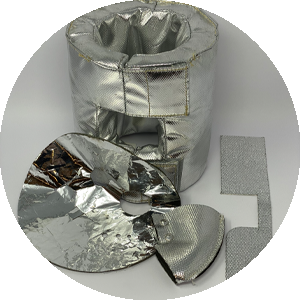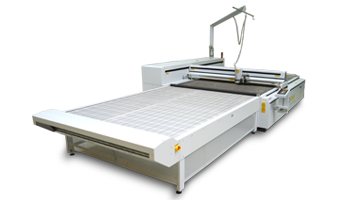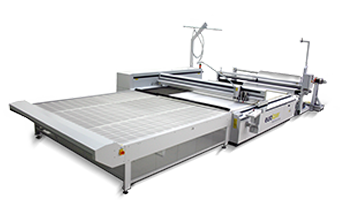
In the automotive sector, silencers, as well as reducing noise, also serve to remove hot combustion gases and can significantly affect engine performance. Due to the very hot exhaust gases, filler is made from heat-resistant fibreglass. Special kinds of this material are designed for temperatures of over 1,000°C and thus ideal for use in hot exhaust systems.
This material can be processed with various techniques, whereby laser technology plays an increasingly important role.
What are the advantages of the laser?
- No wear to the cutting tools (blades)
- No drying process as with water jet cutting
- No distortion of the material thanks to contact-less processing
- Smooth cut edges with no fraying
- Precision cuts, high repeatability

In our example, we tested both glass-fibre fabric and approx. 8 mm thick glass-fibre fleece in our CO2 laser systems. The cut contour corresponds to a typical form used in exhaust systems. It becomes clear in the process that laser cutting provides a precise processing option, without driving up subsequent costs by wearing down tools.
Other applications in the automotive industry are glass-fibre reinforced plastics (FRP) for cladding or thermal insulation (e.g. in the engine compartment). Glass-fibre parts are, despite their low weight compared to metal, stable and can easily processed.
Do you have any questions? We are pleased to advise you.





